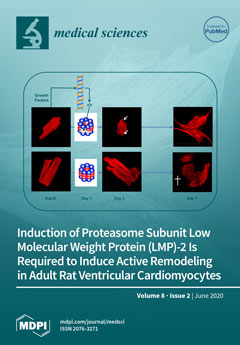This study aimed to assess the one-year mortality risk based on discharge serum chloride among the hospital survivors. We analyzed a cohort of adult hospital survivors at a tertiary referral hospital from 2011 through 2013. We categorized discharge serum chloride; ≤96, 97–99, 100–102,
[...] Read more.
This study aimed to assess the one-year mortality risk based on discharge serum chloride among the hospital survivors. We analyzed a cohort of adult hospital survivors at a tertiary referral hospital from 2011 through 2013. We categorized discharge serum chloride; ≤96, 97–99, 100–102, 103–105, 106–108, and ≥109 mmoL/L. We performed Cox proportional hazard analysis to assess the association of discharge serum chloride with one-year mortality after hospital discharge, using discharge serum chloride of 103–105 mmoL/L as the reference group. Of 56,907 eligible patients, 9%, 14%, 26%, 28%, 16%, and 7% of patients had discharge serum chloride of ≤96, 97–99, 100–102, 103–105, 106–108, and ≥109 mmoL/L, respectively. We observed a U-shaped association of discharge serum chloride with one-year mortality, with nadir mortality associated with discharge serum chloride of 103–105 mmoL/L. When adjusting for potential confounders, including discharge serum sodium, discharge serum bicarbonate, and admission serum chloride, one-year mortality was significantly higher in both discharge serum chloride ≤99 hazard ratio (HR): 1.45 and 1.94 for discharge serum chloride of 97–99 and ≤96 mmoL/L, respectively;
p < 0.001) and ≥109 mmoL/L (HR: 1.41;
p < 0.001), compared with discharge serum chloride of 103–105 mmoL/L. The mortality risk did not differ when discharge serum chloride ranged from 100 to 108 mmoL/L. Of note, there was a significant interaction between admission and discharge serum chloride on one-year mortality. Serum chloride at hospital discharge in the optimal range of 100–108 mmoL/L predicted the favorable survival outcome. Both hypochloremia and hyperchloremia at discharge were associated with increased risk of one-year mortality, independent of admission serum chloride, discharge serum sodium, and serum bicarbonate.
Full article




